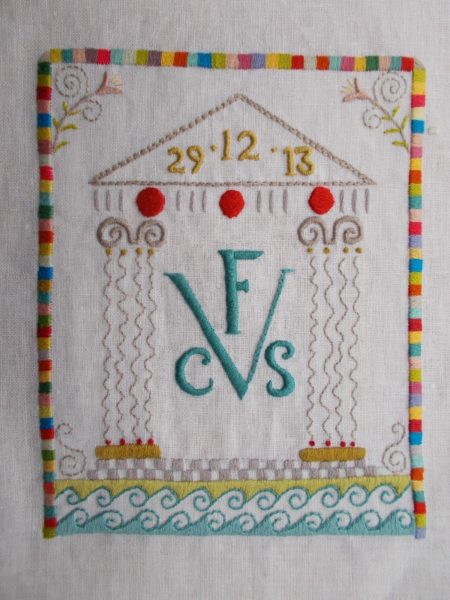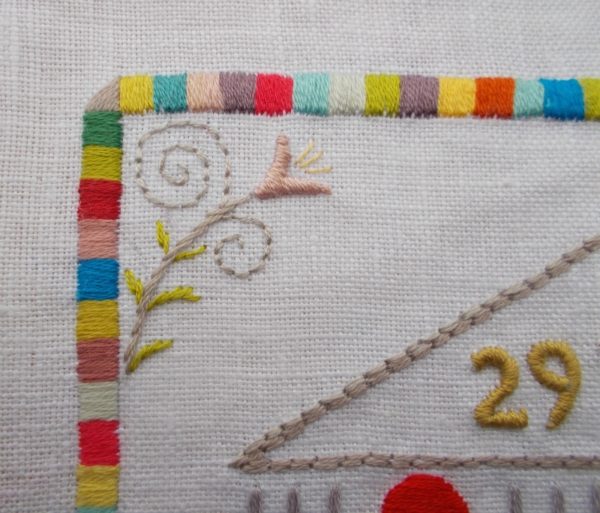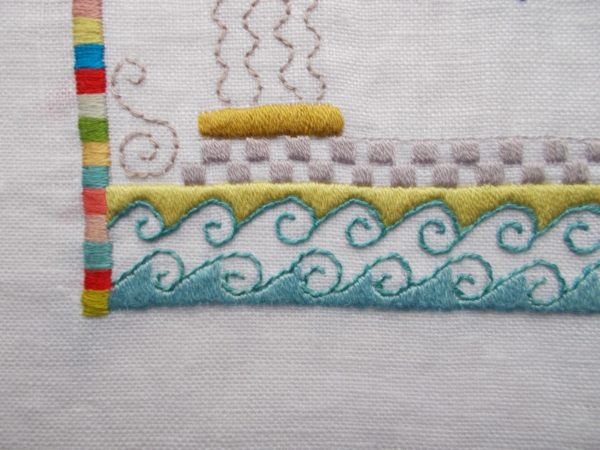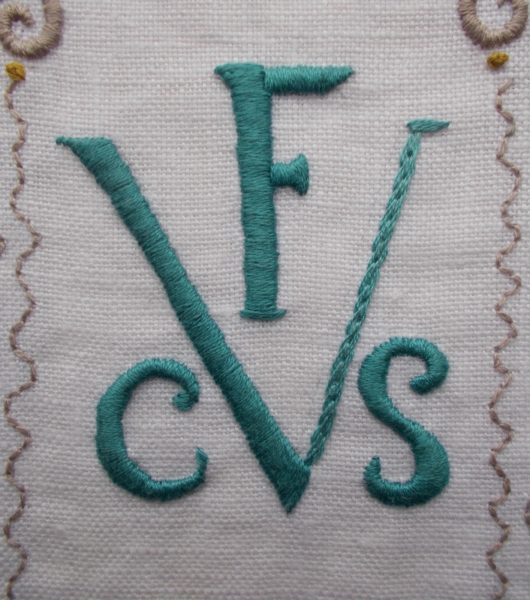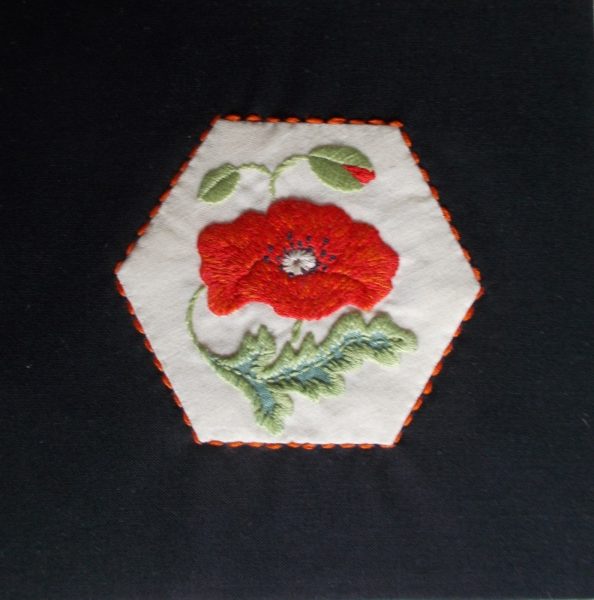
Poppy hand embroidered by Mary Addison
This single scarlet poppy, hand embroidered and framed in the mattest and blackest of frames is the latest (and probably final) member of a group of 4 embroidered flowers now hanging, two by two, on either side of a mirror in daughter No 1’s bedroom. All very serendipity as the first three were rejects from the embroidered flowers for the Ipsden altar frontal (still progressing, not forgotten*). Well, I say rejects but they assume such a status only because of a change in design from a cream background to black. Happily daughter No 1 was pleased to receive the rejects as presents. As there were only 3 and the symmetry of things around the mirror called for a fourth, I embroidered a poppy on to a cream hexagon and gave her this one too.
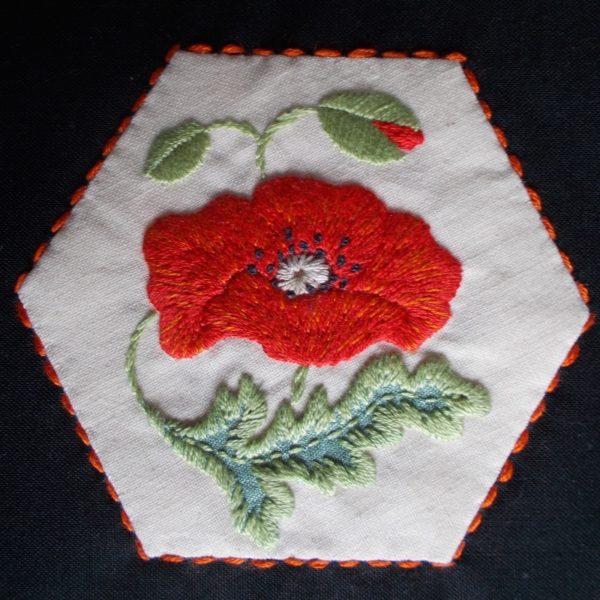
Poppy hand embroidered by Mary Addison
Reds are so wonderful to use, whether as embroidery thread, paint or lipstick that their origin can come as a shock. The main and historically most used ingredient for beautiful reds is the blood of the cochineal beetle – red gold to the Aztecs, Incas and, after the Conquest, the Spanish, who had a monopoly on the trade for centuries. Spanish red was never used for Buddhist robes because there was too much death in it. Today, chemical alternatives are used for pigments and commercial dyes and yet we still use a colour derived from beetle blood, E 120, to paint our lips, dab on our cheeks, give colour to processed ham and cherryness to cherry coke. I love lipstick. I don’t want to think about this too much.
A Perfect Red by Amy Butler Greenfield (Harper Perennial 2005) will put you right in the picture on history and human interest of this most devilish of pigments. The chapter on red in Victoria Finlay’s Colour is also brilliant, beginning and ending with J.M.W.Turner’s paintbox, which just about sums up the scene for the painter in the first 70 years of the C19th .
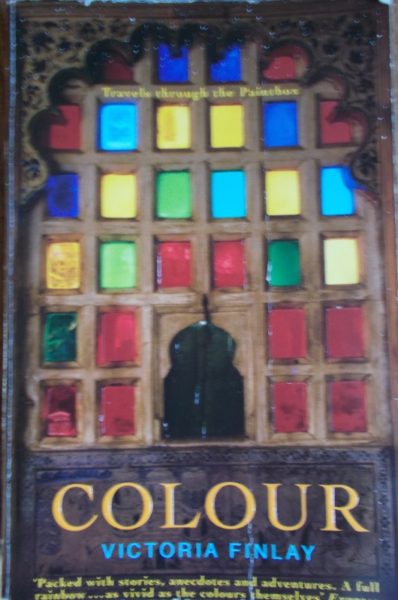
Colour by Victoria Finlay
Available to Turner were many reds but the best were often what is known in the trade as fugitive, i.e. they gradually disappeared. But if Turner saw the colour on his palette and wanted to use it, use it he did with no care for its longevity. The pigment sellers warned him of their elusiveness and he told them to mind their own business. He seemed to paint for the moment and beyond that he didn’t care. Ruskin went so far as to say that no picture of Turner’s was seen in perfection a month after it had been painted. Turner could chose from the following pigments, few of which were without problems.
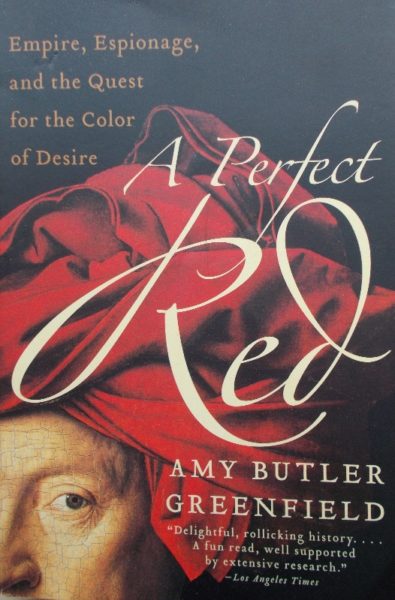
Red by Amy Butler Greenfield
Carmine, from cochineal beetles shows up as a deep crimson where it’s survived, but on Turner’s paintings it often hasn’t, e.g. Waves Breaking against the Wind. where there should be a ruby streak of oil paint instead of unremitting grey. Presumably we know this from detailed analysis of the paint. I’m not clear why carmine was so fugitive for a painter when at the same period Britain seemed to be producing dyes with sophisticated mordants that enabled cloth to maintain the colour of the dye, but this does seem to be the case.
12 kinds of madder available were as fugitive as cochineal.
Red lead, or minium, made by heating white lead could be had ( this was very popular with Persian and Mughal artists whose work was accordingly known as miniatures – nothing to do with size).
Cinnabar one of Turner’s favourites, was the equal combination of fluid mercury and burning Sulphur (HgS), most vividly described by Pliny as the result of an epic struggle between an elephant and a (serpentine) dragon culminating in the dragon coiling round the elephant, which falling to the ground crushes the dragon. Both die and their co-mingled blood forms cinnabar.
The final red on Turner’s palette, Iodene scarlet, he reached out for to paint the dying sun casting a coral light over the broken warship in The Fighting Temeraire. Sadly Iodene scarlet was also fugitive and today we can only try to imagine its perfection at that moment for Turner.
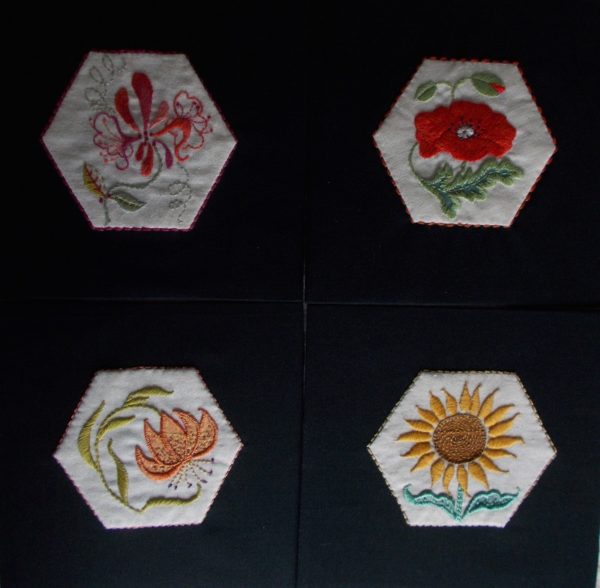
4 flowers (hand embroidered by Mary Addison)
To digress completely. My ex mother-in-law was a great one for perfumes and 40 years ago she gave me Cinnabar, Estée Lauder’s answer to YSL’s Opium which had come out weeks earlier. I loved it and can’t resist quoting from the unsurpassable Perfumes: The Guide by Luca Turin & Tania Sanchez.
“Cinnabar, a stonking oriental named after a mercury mineral found in China, came out weeks after Opium, a stonking oriental named after a drug found in China and packaged in bottles the colour of cinnabar. Cinnabar was (and is) good but not great and was rightly overshadowed by its twin. Now that everyone has grown thoroughly tired of Opium, it is worth smelling it again.”
*If interested, put ‘Ipsden altar frontal’ into the search box at the top right of the blog and work your way through the (many) posts. Only 2 posts appear each time.

